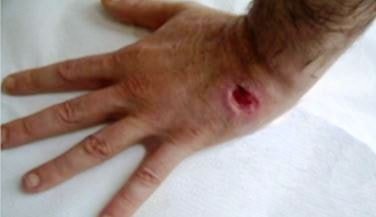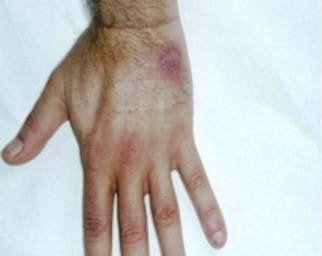Definition
A cancer of the white blood cells is called leukemia. Individuals with leukemia commonly have more white blood cells than usual. These leukemia cells are not the same with healthy white blood cells since they behave differently. Hairy cell leukemia abbreviated as HCL is an atypical cancer in the blood that grows slowly.
The disease is chronic and often occurs among individuals between 40 to 60 years old and is more observed in males than in females. HCL affects a kind of white blood cell known as the B-lymphocyte.

These lymphocytes are cells that fight off infections. The excess B-lymphocyte cells are abnormal and if they are studied under a microscope, it appears to have hair-like projections around its surface. It is where the name of the condition is taken from.
When leukemia is present, the bone marrow of the person produces excessive immature white blood cells that do not properly work. After some time, these leukemic cells increase in number and reduce the production of healthy red blood cells, white blood cells, and platelets.
In this condition, the leukemia cells also develop in the spleen and cause an enlargement. The growth of the spleen might take out the normal blood cells from the bloodstream causing the amount of white blood cells and red blood cells to decrease.
Symptoms of Hairy Cell Leukemia
Hairy cell leukemia develops slowly so it might not cause any symptoms for some people. Sometimes, it is accidentally discovered when a blood test is done for a different reason such as a routine health check or when the person looks pale and tired due to anemia. Symptoms of HCL include:
- Weakness
- Breathlessness
- Always feeling tired
- Fever and infections that frequently occur
- Losing weight for no reason
- Enlarged spleen or liver
- Inflamed lymph nodes
- Bleeding and bruising so easily
- Excessive sweating that is most common at night
- Tiny red spots on the skin
- Bone pain mainly under the ribs
- Lumps in the underarm, groin, neck, and stomach that are not painful
If HCL is present, it is essential to keep an eye on the condition for certain signs and symptoms that the disease is progressing. Call the physician if immoderate bleeding occurs, a cough or fever that is persevering, an infection, or primarily because of not feeling well. These may be indications that the white blood cell count is low.
Causes
The causes of hairy cell leukemia are still not known. However, physicians know that the cancer occurs when there are certain DNA errors in the development of the cells.
In the case of HCL, mutations in the DNA are the reason for the bone marrow stem cells to produce an inadequate production of white blood cells that does not work correctly.
Physicians are still clueless as to what causes the DNA mutations that led to hairy cell leukemia. The condition is not infectious and neither can it be passed to other individuals.
Treatment
Hairy cell leukemia is extremely treatable and the treatment options are very much effective. If the condition is not progressing and no symptoms are present, no treatment may be needed.
Instead, the physician monitors the condition by having regular blood tests. The physician will propose treatments when symptoms are present, or if the blood test shows that the amount of abnormal white blood cells is increasing. Different treatments for HCL include:
Chemotherapy
This option is usually used by many and is the most effective one. The use of anti-cancer drugs such as pentostatin and cladribine are involved in order to destroy the leukemia cells.
Chemotherapy gets rid of almost all signs of the leukemia which is called remission. A remission could last for several years and if HCL recurs, chemotherapy is given to get into remission once again. This type of treatment makes the person more susceptible to getting infections so the specialist usually prescribes antibiotics to prevent it.
Chemotherapy drugs for treating HCL are the following:
Cladribine
Treatment for HCL usually starts with this drug. It is recommended to the patient and is injected under the skin, or infused into the vein. Majority of individuals who receive this drug undergoes a full remission that could last for many years. Possible side effects are skin rashes, headache, nausea, fever, muscle pains, and infection.
Pentostatin
It is a drug given by the physician and is injected into a vein for every two weeks. Side effects may include fever, skin rashes, and certain changes of how the kidney works.
Splenectomy
This is a procedure that requires surgery to remove the spleen, to either stabilize the leukemia or cause a remission for individuals have a very large spleen but have little quantity of leukemia in the bone marrow.
Biological Therapy
Interferon and Rituximab drugs may be administered to make the cancer cells more perceivable by the immune system. Once the immune system detects cancer cells as infiltrators, it could destroy the cancer.
Prognosis
A patient’s prognosis varies on a case to case basis. Most individuals with the condition react well to treatment which means they also have a good prognosis. Patients might not have a remission of HCL when the body responds positively with treatment.
Survival Rate
There is a chance of at least 96 total patients can survive out of every 100 patients who are positively diagnosed to have HCL, and having a chance of living for another 10 years more after they have been diagnosed of the disease.
Life Expectancy
Patients with proper treatment may live between 5 to 10 years depending on their body’s response towards HCL treatment.
Pictures

References
- http://www.healthline.com/health/hairy-cell-leukemia#Overview1
- http://www.mayoclinic.org/diseases-conditions/hairy-cell-leukemia/basics/definition/con-20026432
- http://www.macmillan.org.uk/Cancerinformation/Cancertypes/Leukaemia/Hairycellleukaemia.aspx
- Tiacci E, Schiavoni G, Forconi F, et al (2012 Jan 5). Simple genetic diagnosis of hairy cell leukemia by sensitive detection of the BRAF-V600E mutation. Blood. 119(1):192-5.
- Ganzel C, Gatt ME, Maly A, Ben-Yehuda D, Goldschmidt N (2011 Oct 31). High incidence of skin rash in patients with hairy cell leukemia treated with cladribine. Leuk Lymphoma.
- Kreitman RJ, Arons E, Stetler-Stevenson M, Fitzgerald DJ, Wilson WH, Pastan I (2011 Jun). Recombinant immunotoxins and other therapies for relapsed/refractory hairy cell leukemia. Leuk Lymphoma. 52 Suppl 2:82-6.
Similar Posts:
- Acute Lymphocytic Leukemia
- Childhood Leukemia
- Acute Myeloid Leukemia
- Chronic Myelogenous Leukemia
- Chronic Lymphocytic Leukemia
- Acute Lymphoblastic Leukemia
- Mast Cell Tumor






Leave a Reply